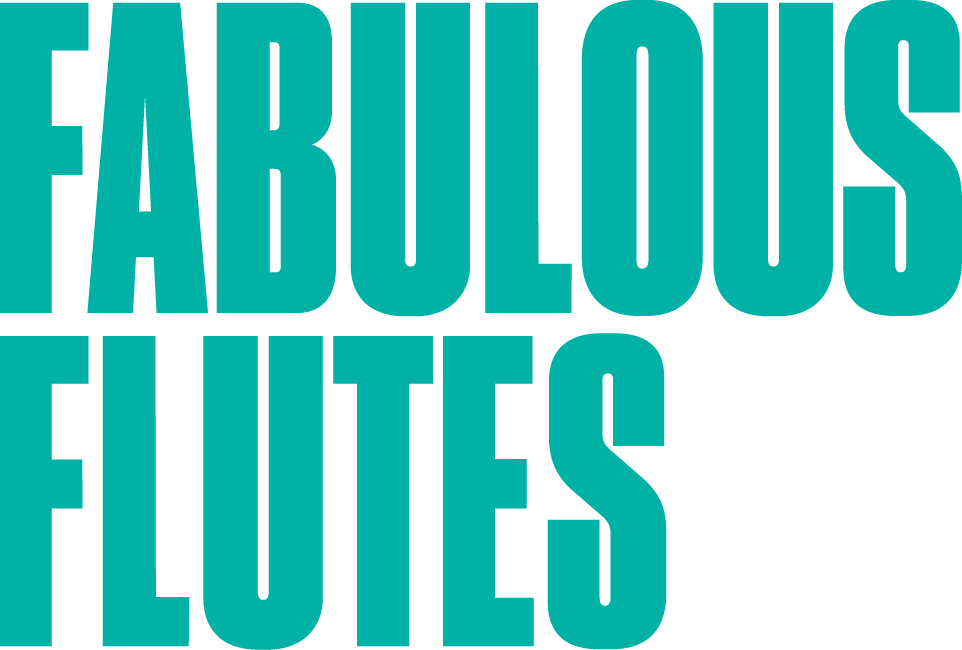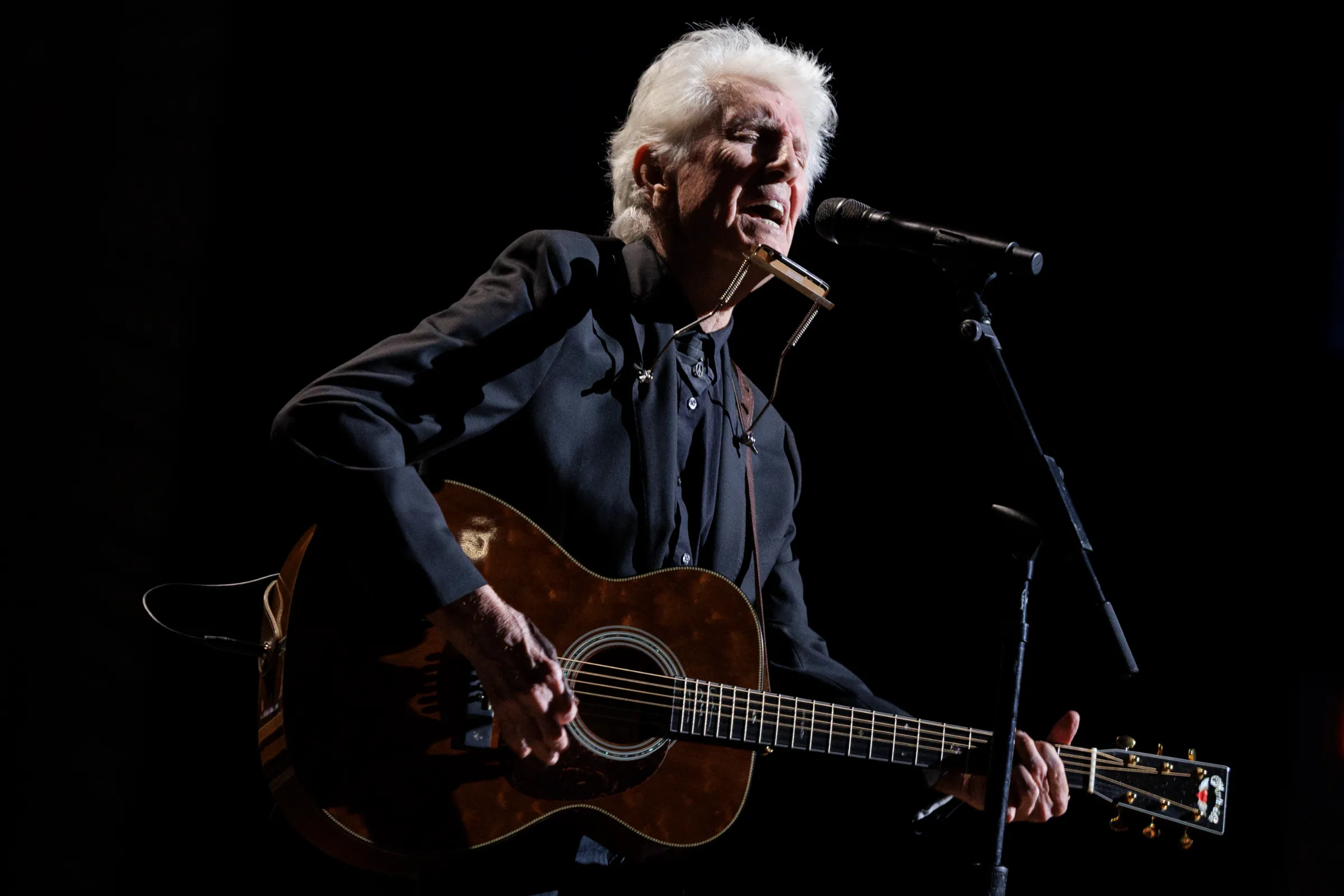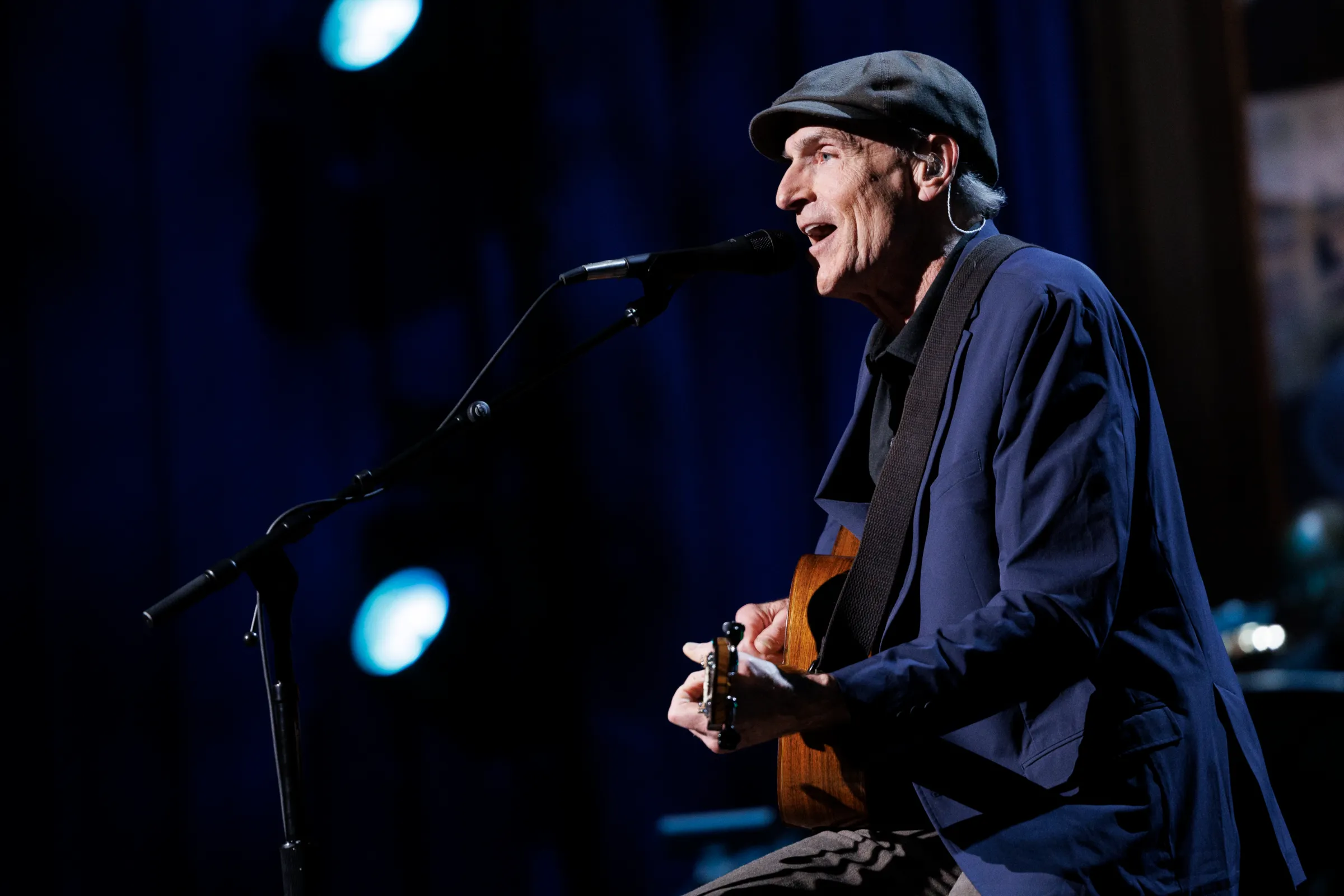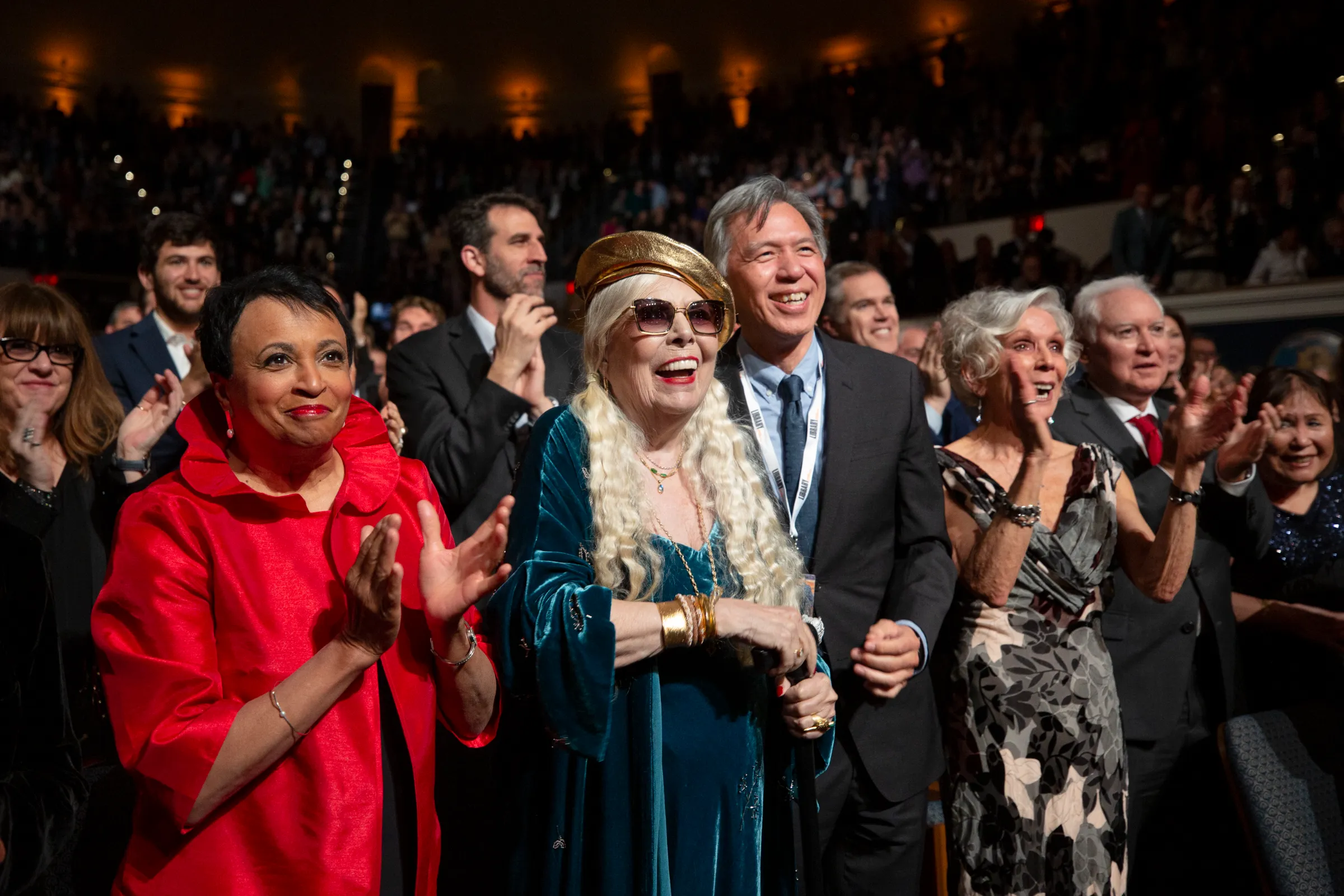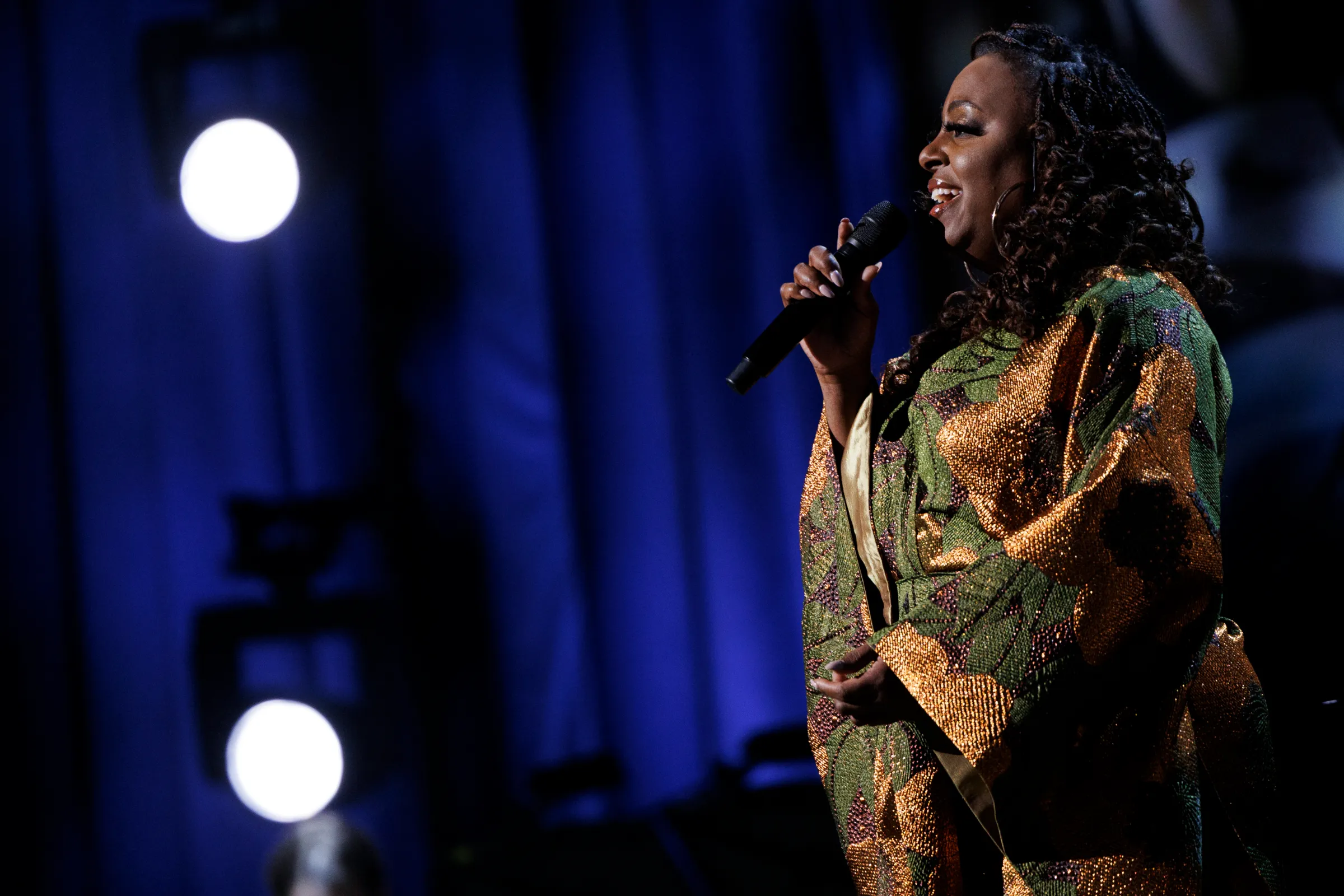Library of Congress Magazine March / April 2023

Features
-
8
An extraordinary copy of James Joyce’s groundbreaking novel.
-
14
How a scientist built the world’s greatest collection on one musical subject.
-
20
Manuscript sheds light on Indigenous life under Spanish rule.
- ▪ A camera lens peers inside the tube of a Plexiglas flute from the Dayton C. Miller collection of flutes and wind instruments at the Library of Congress. Shawn Miller
Departments
- 2 Trending
- 3 Favorite Place
- 4 Curator’s Picks
- 5 For You
- 6 Technology
- 10 Page from the Past
- 12 Online Offerings
- 13 My Job
- 24 Around the Library
- 25 News Briefs
- 26 Shop the Library
- 27 Support the Library
- 28 Last Word
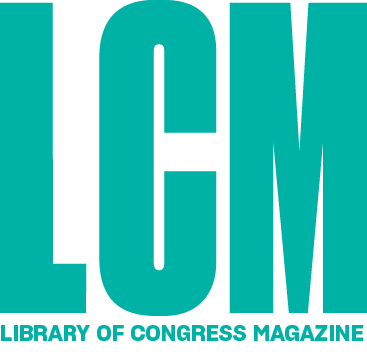
- March / april 2023
Vol. 12 No. 2 - Mission of the Library of Congress
- The Library’s mission is to engage, inspire and inform Congress and the American people with a universal and enduring source of knowledge and creativity.
- Library of Congress Magazine is issued bimonthly by the Office of Communications of the Library of Congress and distributed free of charge to publicly supported libraries and research institutions, donors, academic libraries, learned societies and allied organizations in the United States. Research institutions and educational organizations in other countries may arrange to receive Library of Congress Magazine on an exchange basis by applying in writing to the Library’s Director for Acquisitions and Bibliographic Access, 101 Independence Ave. S.E., Washington DC 20540-4100. LCM is also available on the web at loc.gov/lcm/. All other correspondence should be addressed to the Office of Communications, Library of Congress, 101 Independence Ave. S.E., Washington DC 20540-1610.
- news@loc.gov
loc.gov/lcm
ISSN 2169-0855 (print)
ISSN 2169-0863 (online) - Carla Hayden
Librarian of Congress - April Slayton
Executive Editor - Mark Hartsell
Editor - Ashley Jones
Designer - Shawn Miller
Photo Editor -
Contributors
Connie L. Cartledge
Sahar Kazmi
Wendi A. Maloney
Mike Mashon
Midori
Elizabeth A. Novara
Neely Tucker
Carol Lynn Ward-Bamford
Connect On
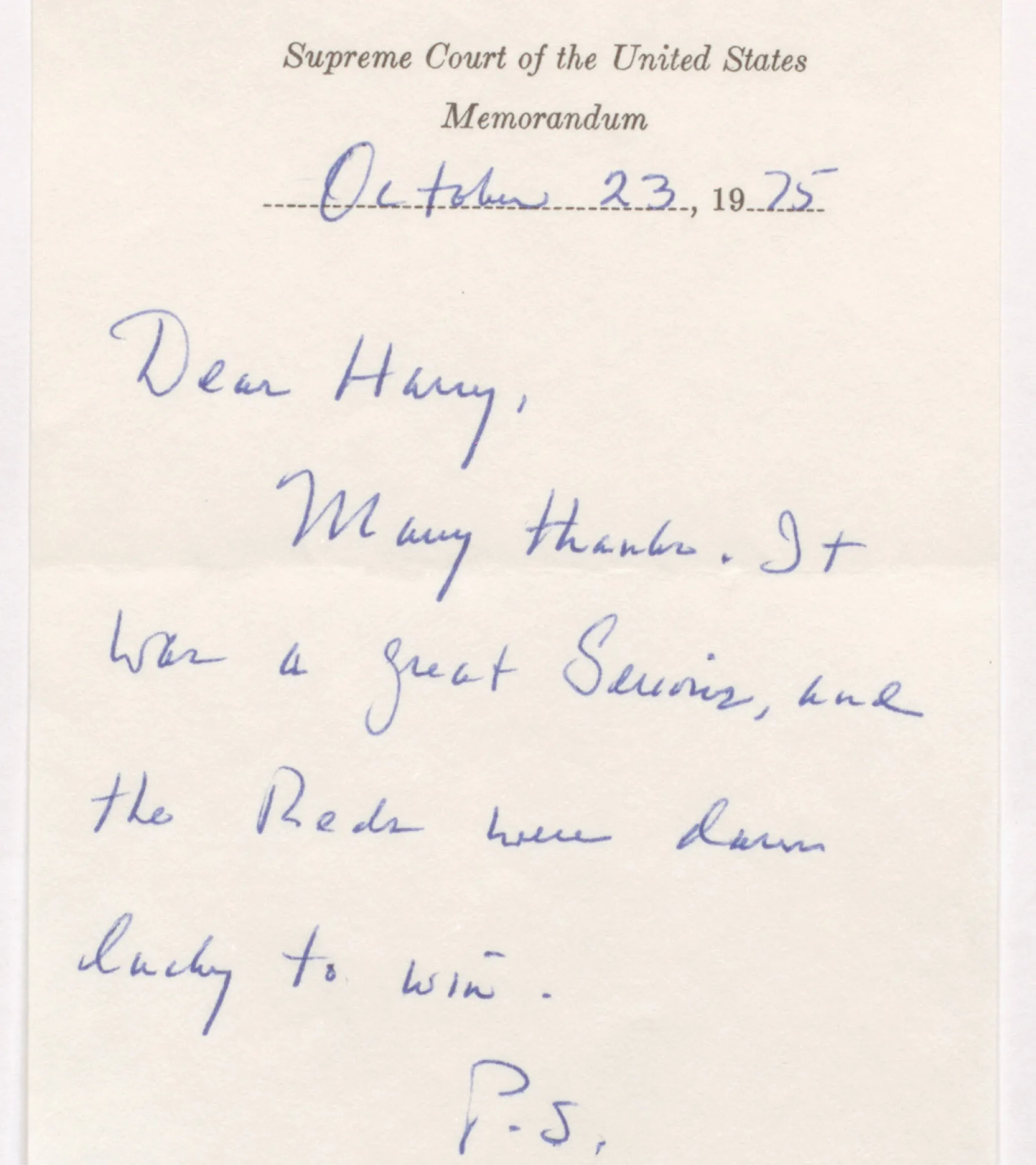
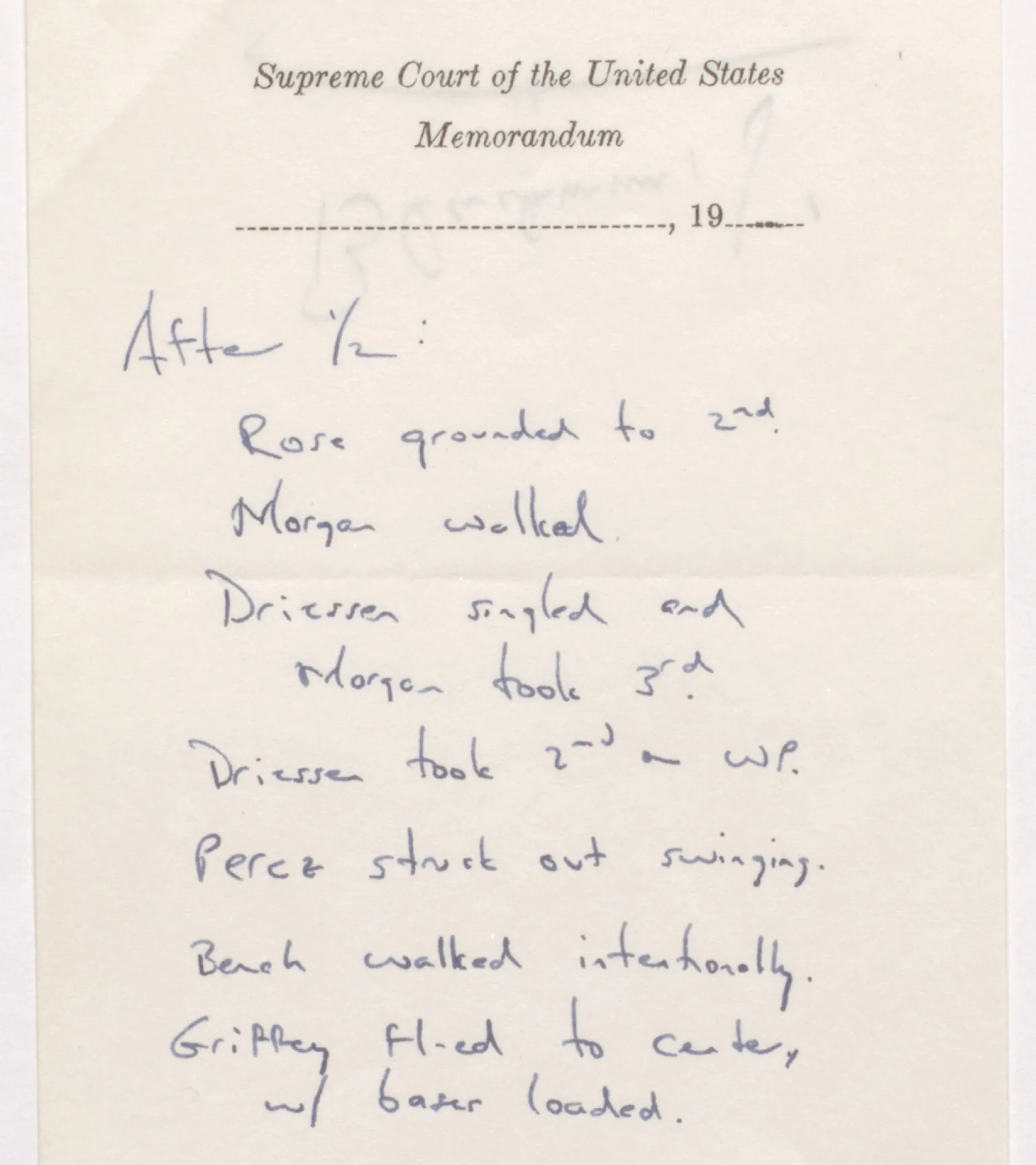
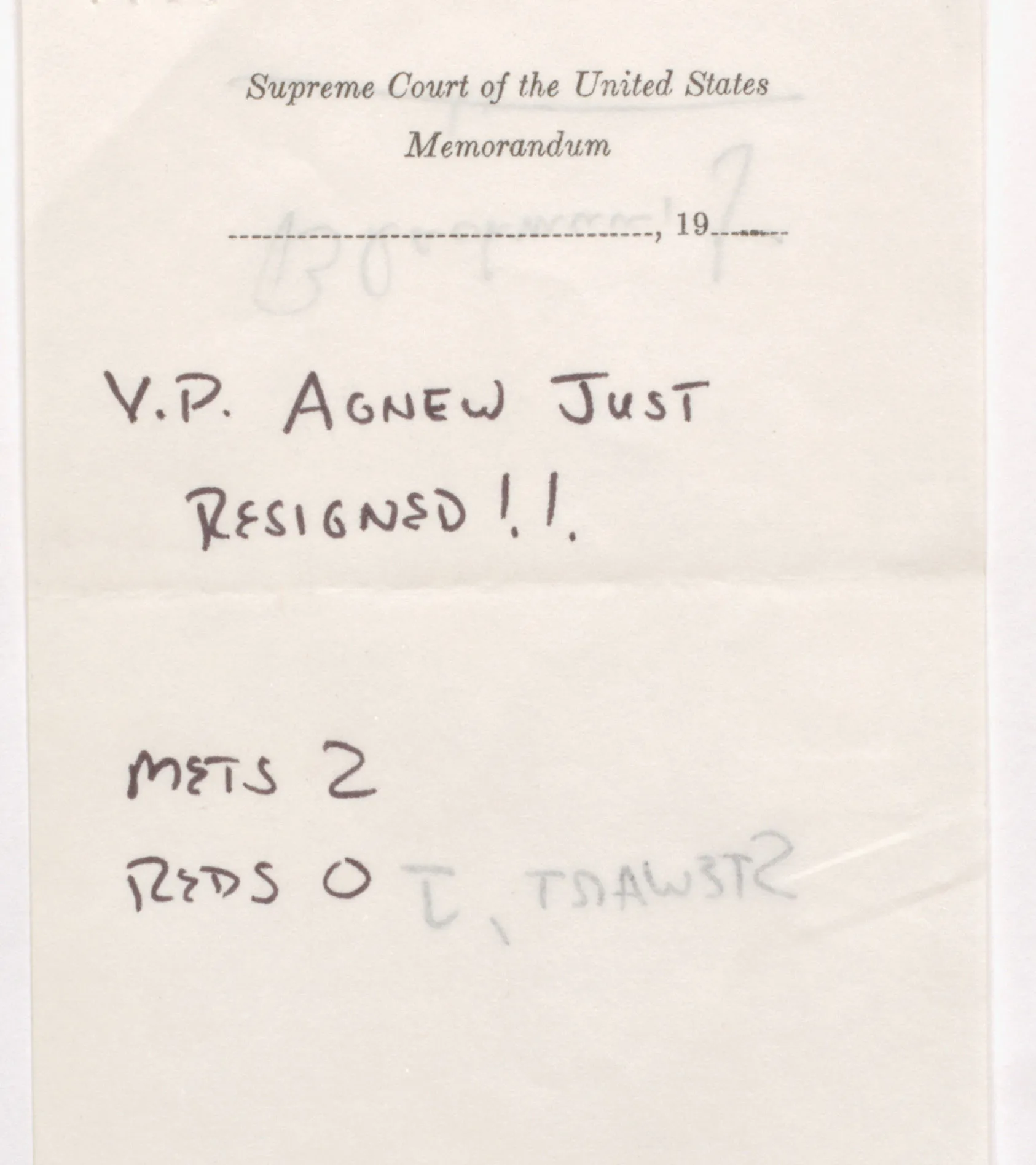
Supreme fans
As baseball prepares for opening day, the papers of Supreme Court Justice Harry A. Blackmun make a fitting case in point: They reveal Blackmun and other justices as avid fans of the game.
During oral arguments, justices occasionally would exchange notes about goings-on inside and outside of the court. Blackmun’s papers contain many examples, including some about baseball.
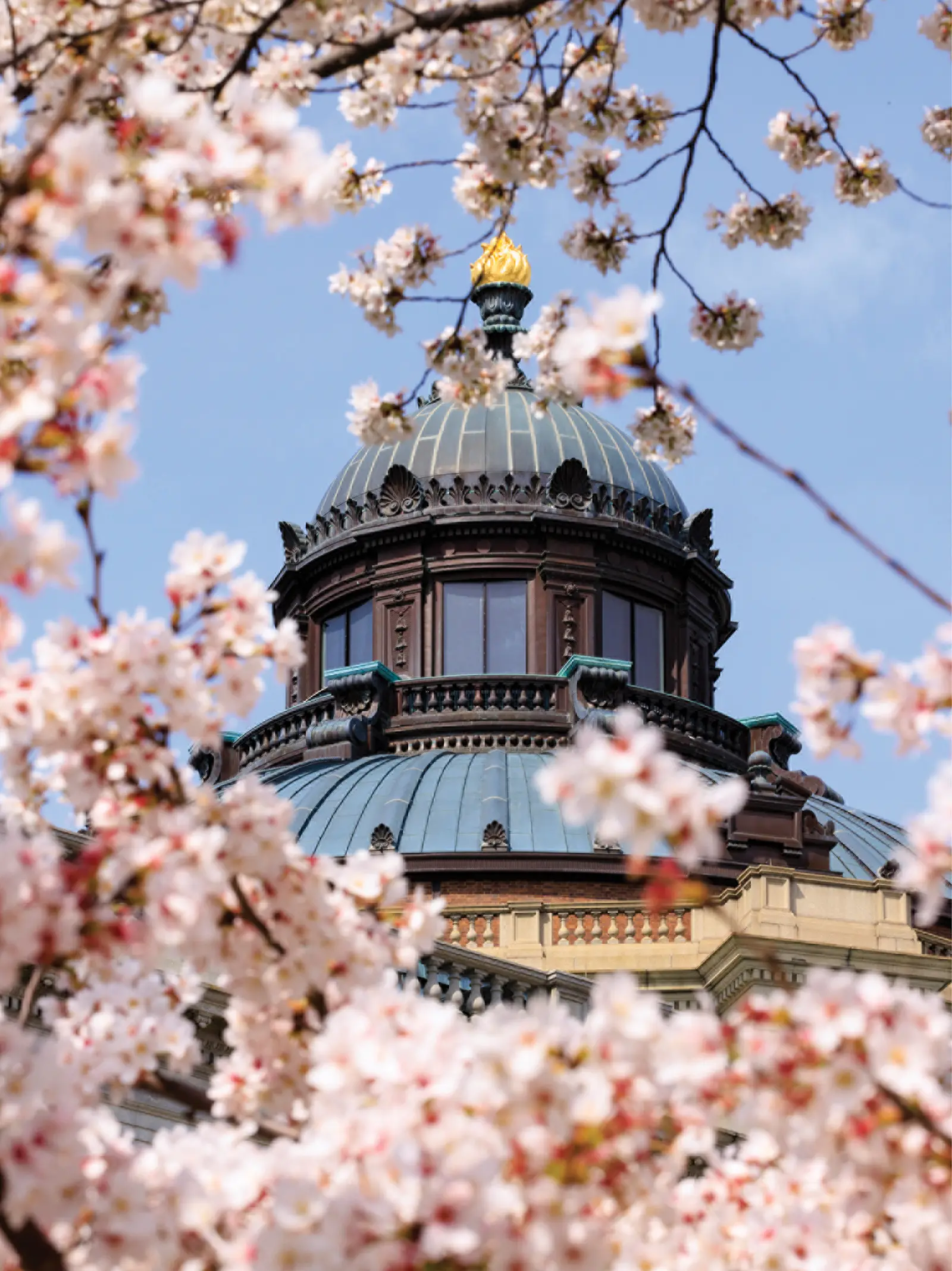
In bloom
Come April, the U.S. Capitol campus flowers into color and life. Tulips, crocuses and daffodils bloom. Dogwood, magnolia and cherry blossoms fill the horizon, whichever way you turn. Down at the Capitol reflecting pool, ducklings paddle busily around their mothers.
Visitors, glad to finally shed layers of winter wear, arrive in larger numbers. They stroll the wide walkways, looking for the perfect spot to snap the perfect photo: the Capitol dome framed by blossoms.
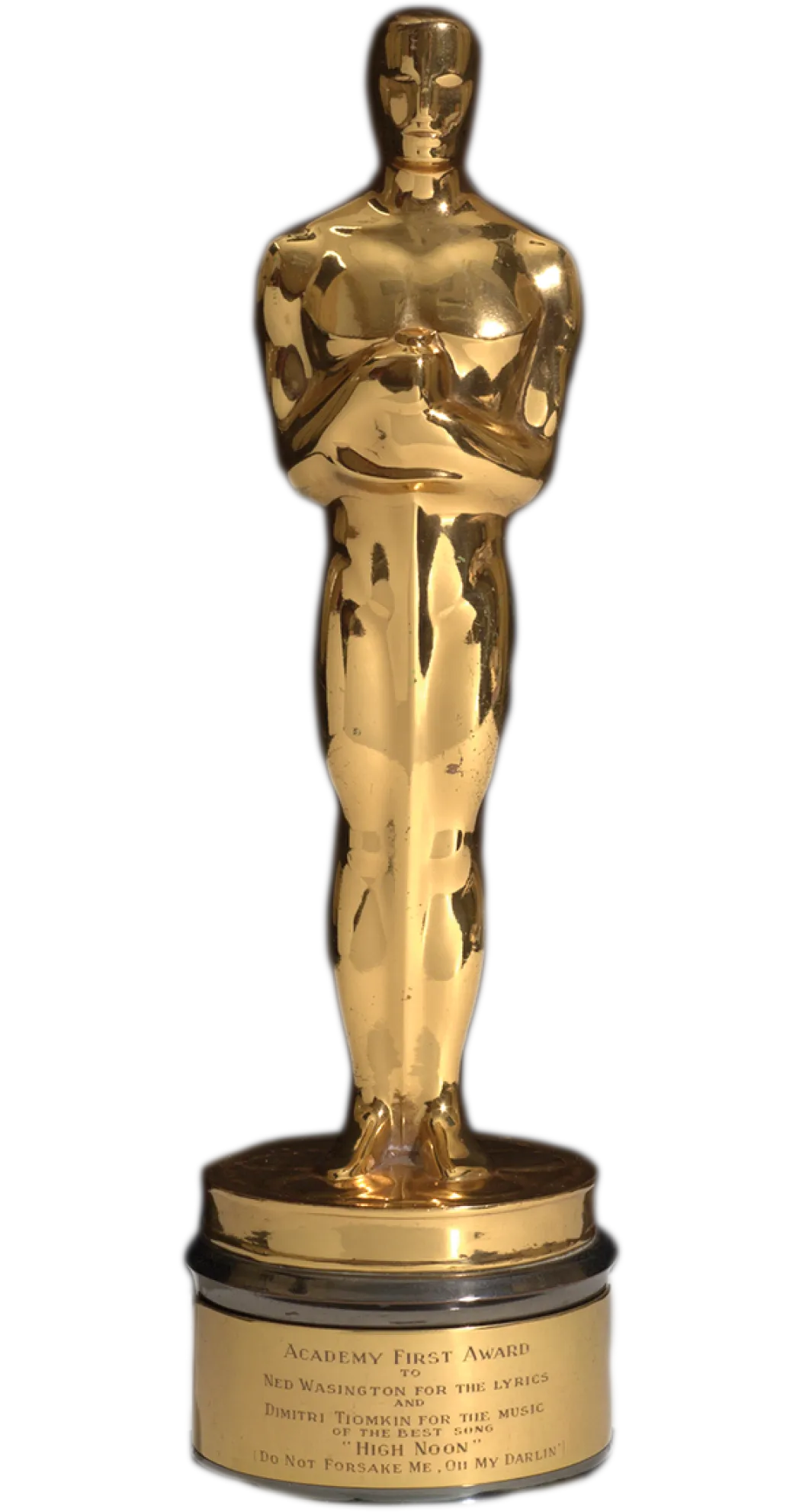
The Oscar goes to …
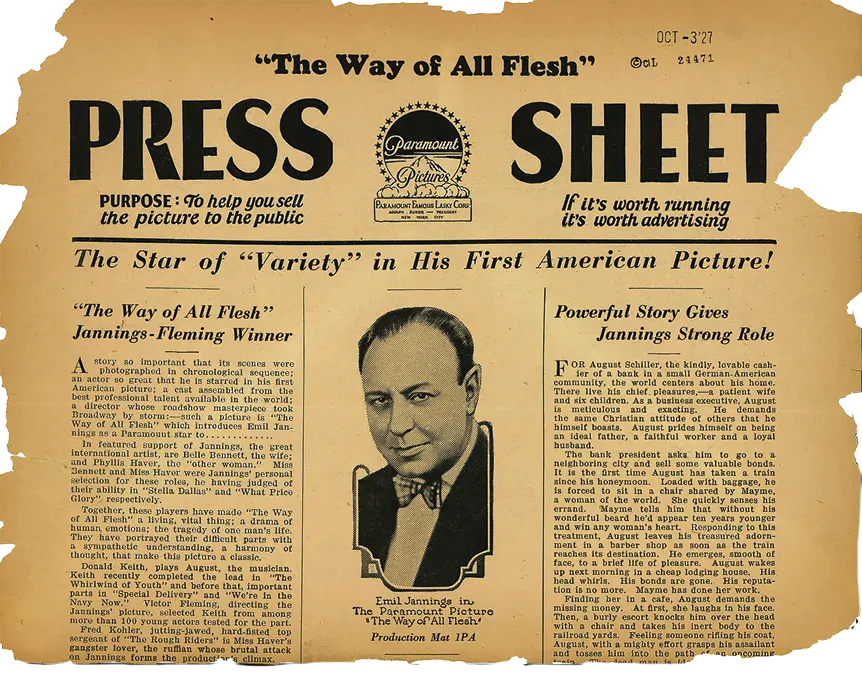
‘The Way of All Flesh’ Press Kit
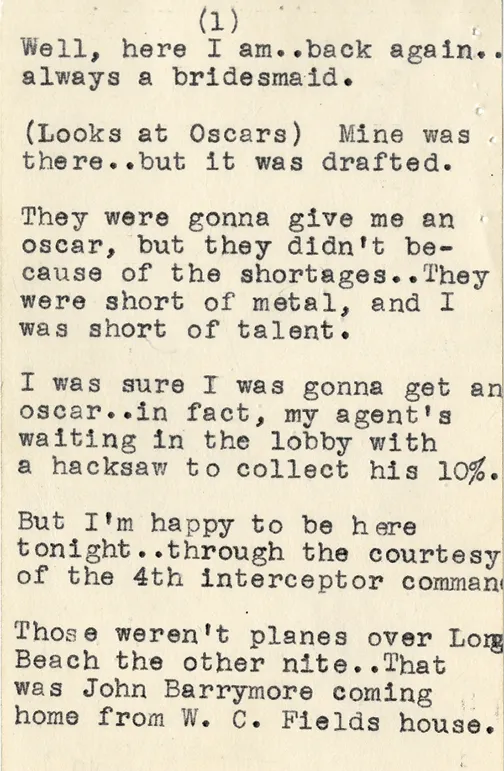
Bob Hope’s NoteCard

On the Red Carpet
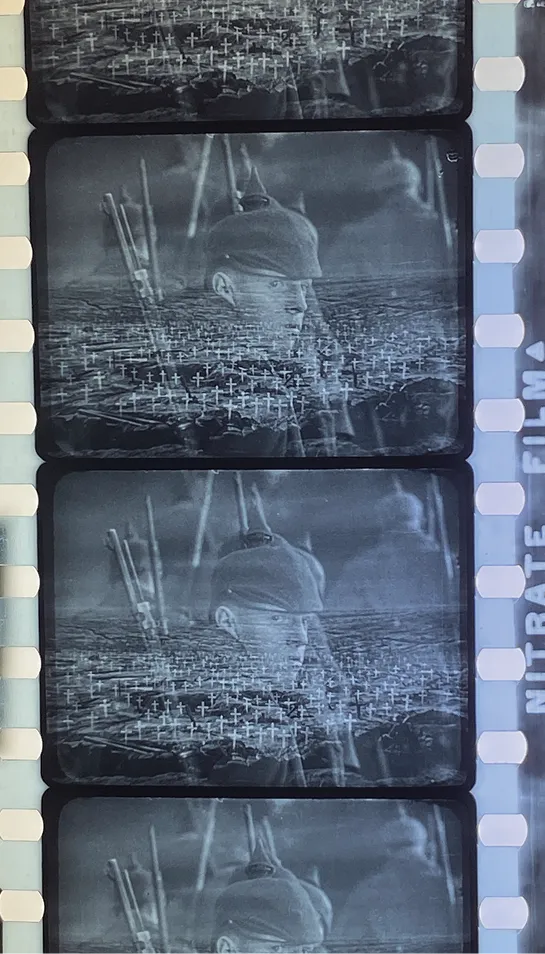
‘All Quiet on the Western Front’
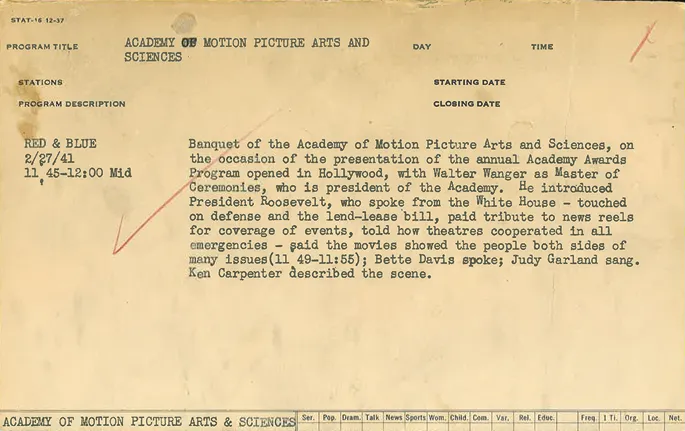
Oscars on the Radio

‘The Way of All Flesh’ Press Kit

Bob Hope’s NoteCard

On the Red Carpet

‘All Quiet on the Western Front’

Oscars on the Radio
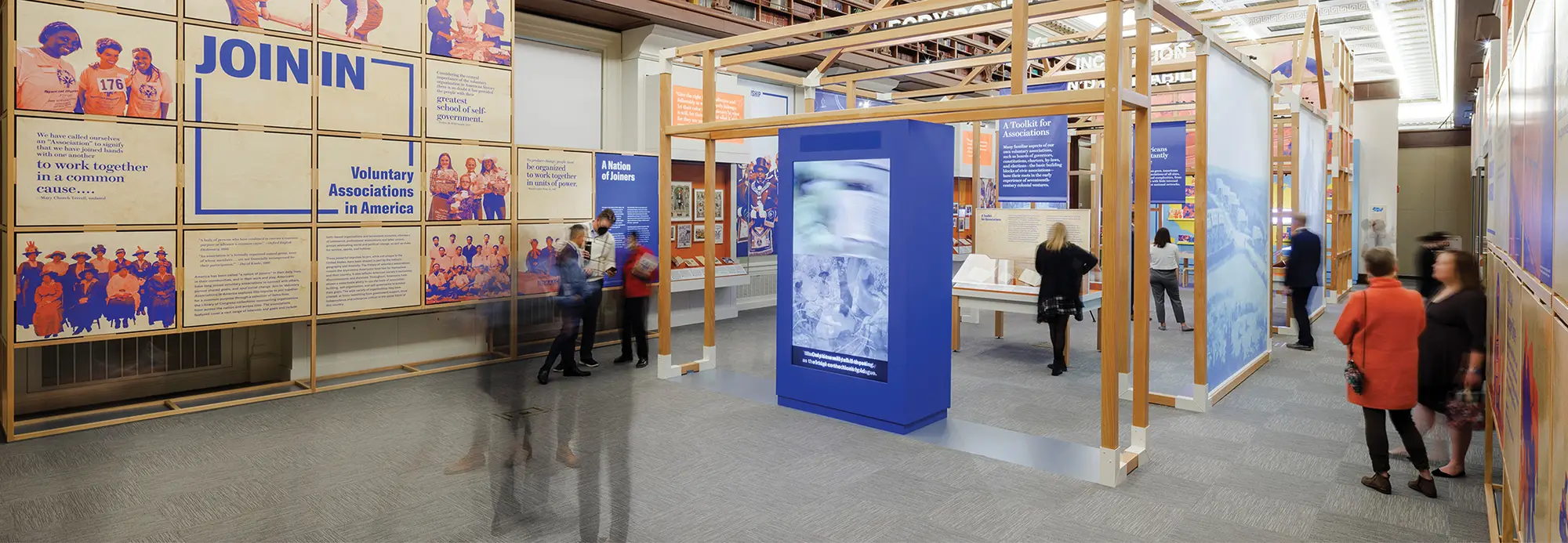
‘Join In’
Since the earliest days of English colonization, Americans have organized themselves in self-governing groups for common purposes: fellowship, charity, professional growth, emergency services, societal reform, community building.
In 1620, passengers on the Mayflower signed the Mayflower Compact, thus forming a “civil body politic” that allowed them to function as a unit until they were granted a warrant to form a new colony. The original compact no longer exists, but the Law Library of Congress holds the earliest surviving text: “Mourt’s Relation,” printed in 1622 and now part of the exhibition.

Seeing Lost Enclaves
Now, 2023 Innovator in Residence Jeffrey Yoo Warren is building another doorway to the past with his project, “Seeing Lost Enclaves: Relational Reconstructions of Erased Historic Neighborhoods of Color.”
Using 3D modeling techniques and insights from the collections, Yoo Warren is developing a virtual reconstruction of the once-bustling Chinatown district in Providence, Rhode Island. A vibrant enclave 100 years ago, it largely has been erased from historical memory.
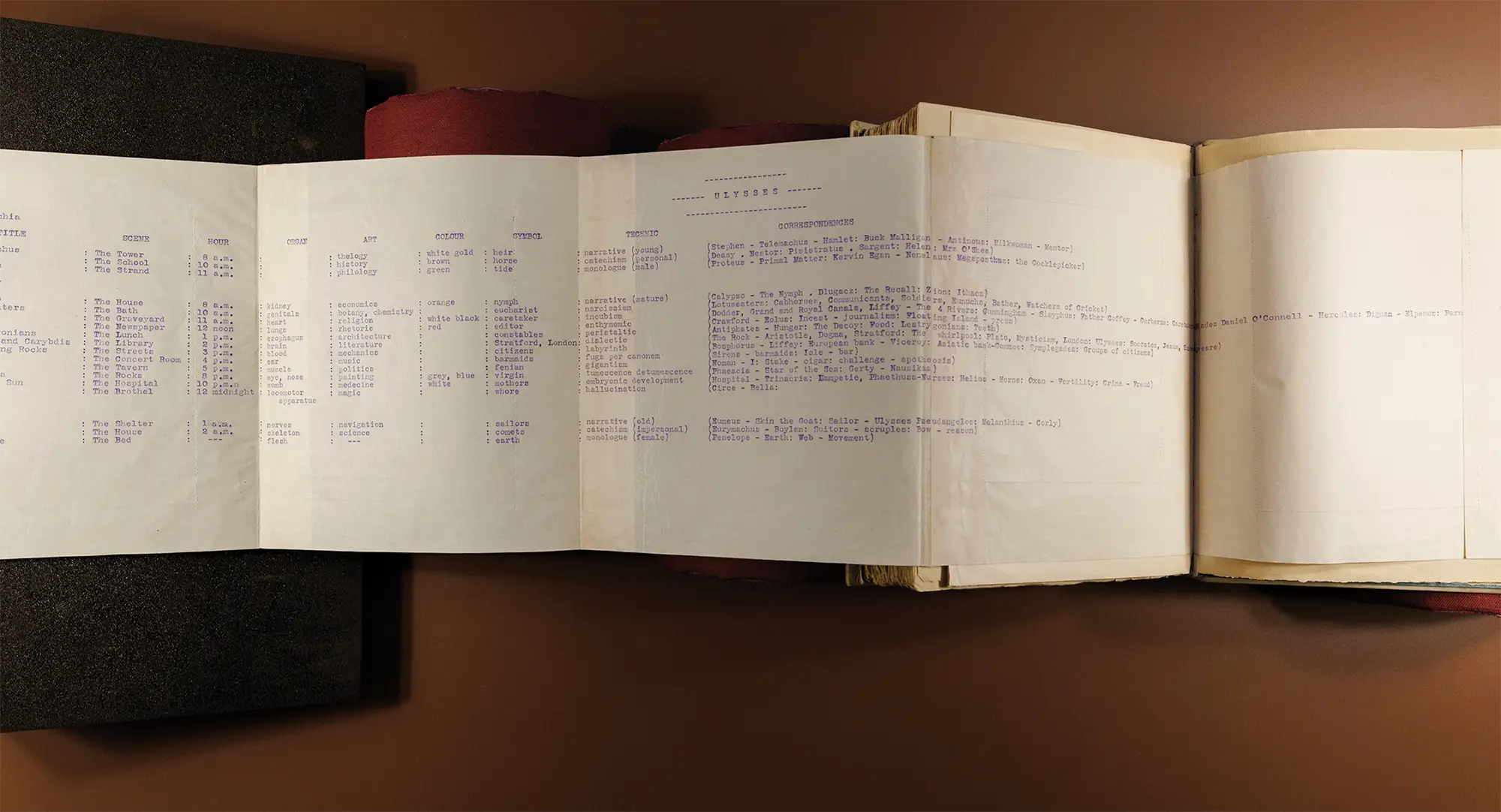
The ultimate ‘Ulysses’
Beach limited her first edition to 1,000 copies. All were numbered, and 100 were signed by the author. It was a brilliant decision. The novel went on to be regarded as one of the premier literary works of the 20th century and Joyce one of the era’s great authors. Copies of that first print run became some of the most sought-after books of the age.
And yet all of that scarcely begins to describe the first edition of “Ulysses” acquired in 2020 by the Library. It’s a marvel to behold: Copy #361 is bound in bespoke calfskin, front and back covers initialed by the author, the title page inscribed by Joyce to a friend, with inserts that include Joyce’s own guide to deciphering the book.

Putting California on the map
At that time in Europe, authoritative knowledge of the New World’s geography was based upon the observations of primarily Spanish- and Portuguese-sponsored expeditions that crossed the Atlantic to explore uncharted places.
The information they acquired was vital to Spain’s status as a world power. After all, the Spanish could better claim an empire if they could show these new territories on a map.
In 1562, Diego Gutiérrez, the principal cosmographer to King Philip II of Spain, created a map of the Western Hemisphere to serve that purpose.

Pathways to Women’s History
Originally published in book form as American Women: A Library of Congress Guide for the Study of Women’s History and Culture in the United States, an online version of the guide appeared soon afterward on the Library’s former American Memory website.
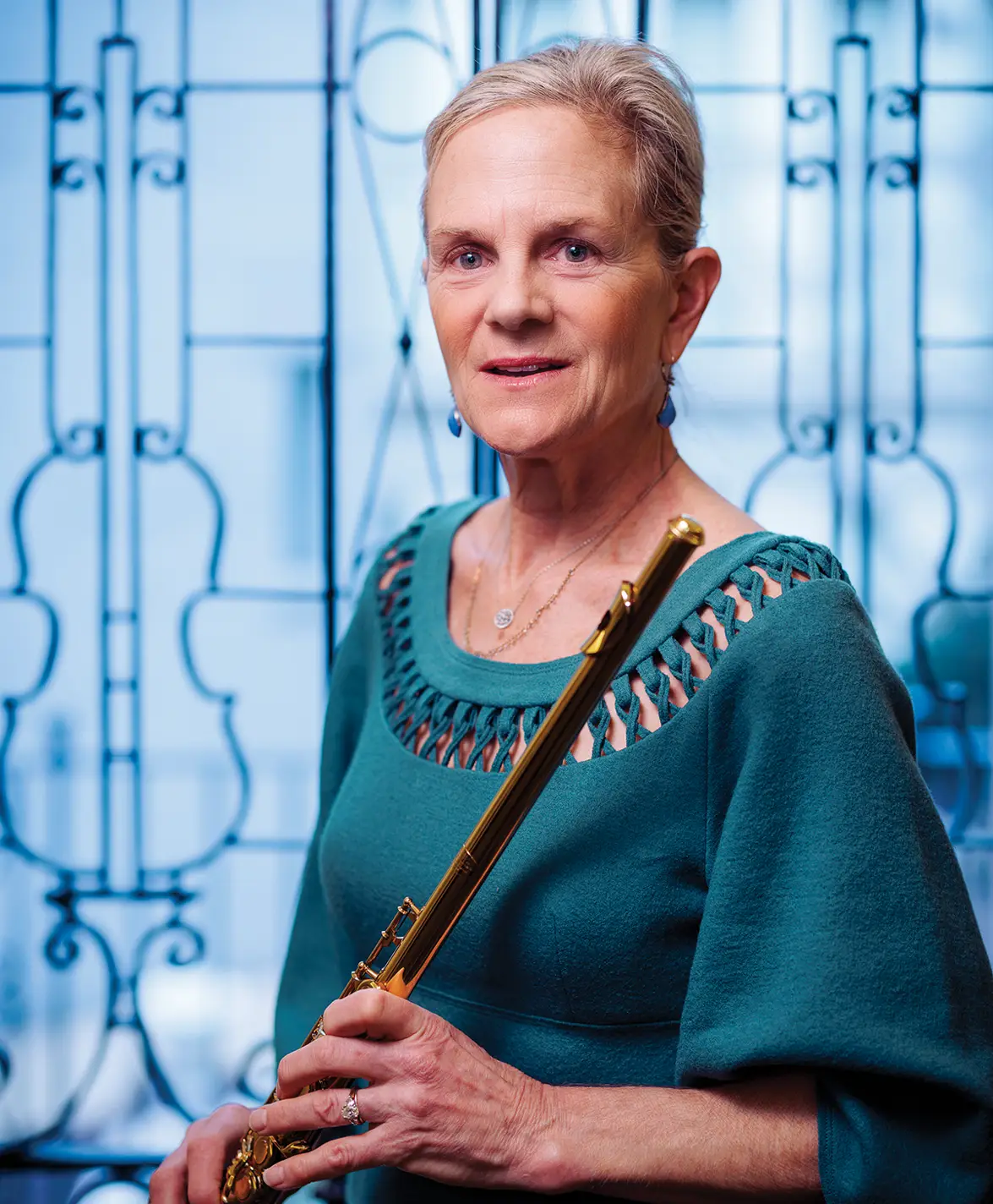
I take care of the musical instruments collections in the Music Division. The Library has over 2,000 instruments — mostly woodwinds and bowed stringed instruments — that are available for study, performance and exhibition.
My days are spent managing their care; their use in public performances, displays and exhibitions; and visitor requests to see, examine or copy them. The Dayton C. Miller flute collection comprises not just the flutes themselves but also an entire reference collection of related books, music scores, patents, iconography, statues, photographs and more. So, I often work with different divisions at the Library and many types of visitors.
Fabulous Flutes
Standing in the Great Hall last fall, Grammy-winning singer-songwriter Lizzo gave an impromptu performance on one of the Library’s most-prized musical instruments: a rare crystal flute that once belonged to President James Madison.
The next night, she and the flute reprised the performance at her Capital One Arena concert before thousands of adoring fans, holding their phones aloft to record the scene for posterity and TikTok.
“I want everybody to make some noise for James Madison’s crystal flute, y’all,” said Lizzo, who then advised the crowd about the difficulties of playing such an unusual instrument: “It’s crystal — it’s like playing out of a wine glass!”
The San Salvador Codex
The codex, purchased by the Library last fall, contains new details about the earliest legal structures in Mexico after Spanish colonization and the way Indigenous people used Spanish laws to defend their rights. The codex is one of only six 16th-century pictorial manuscripts from central Mexico known to still exist. With its acquisition, the Library now holds three of them: the 1571 San Salvador Huejotzingo Codex, the 1531 Huexotzinco Codex and the 1593 Codex Quetzalecatzin.
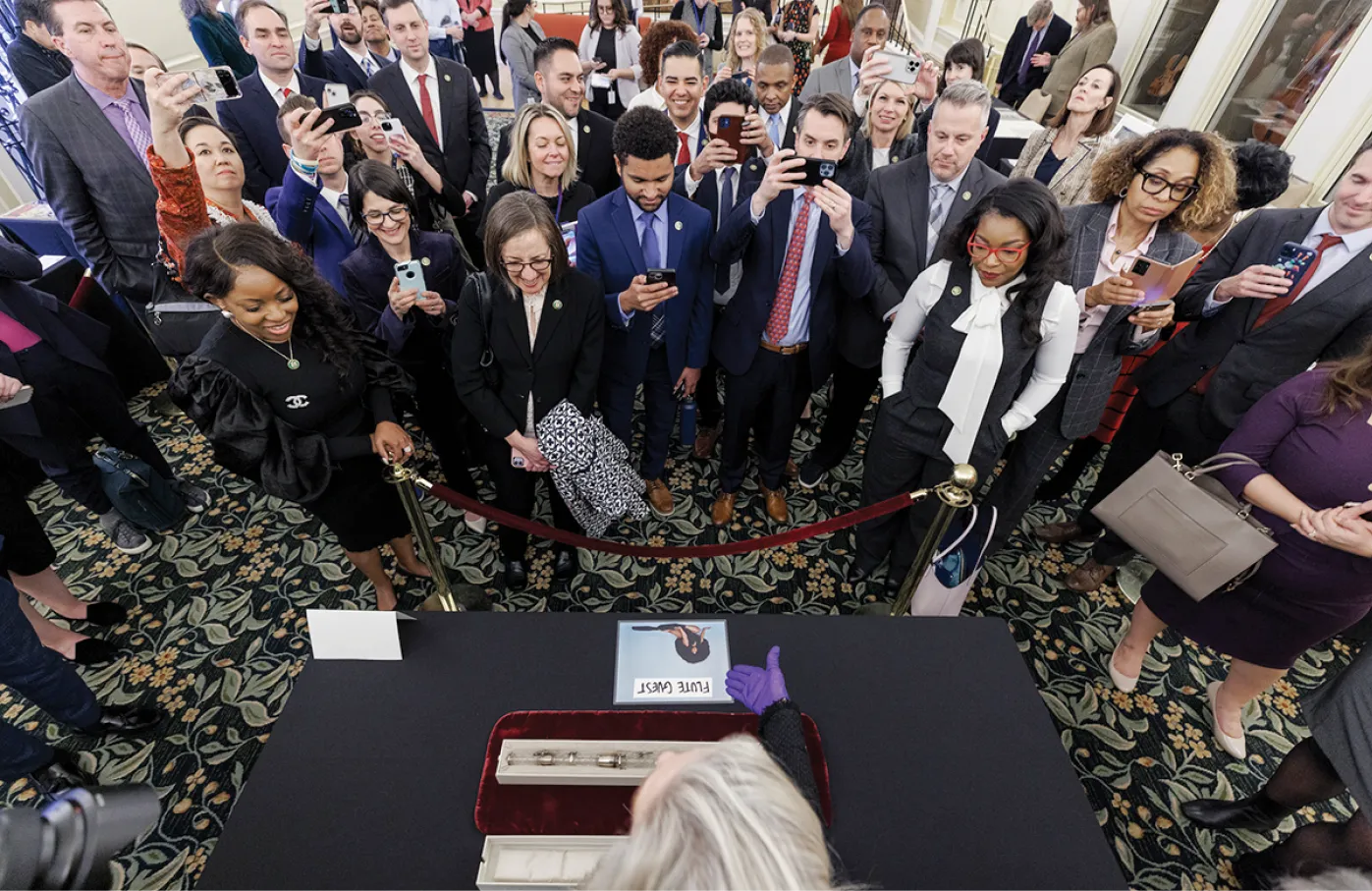
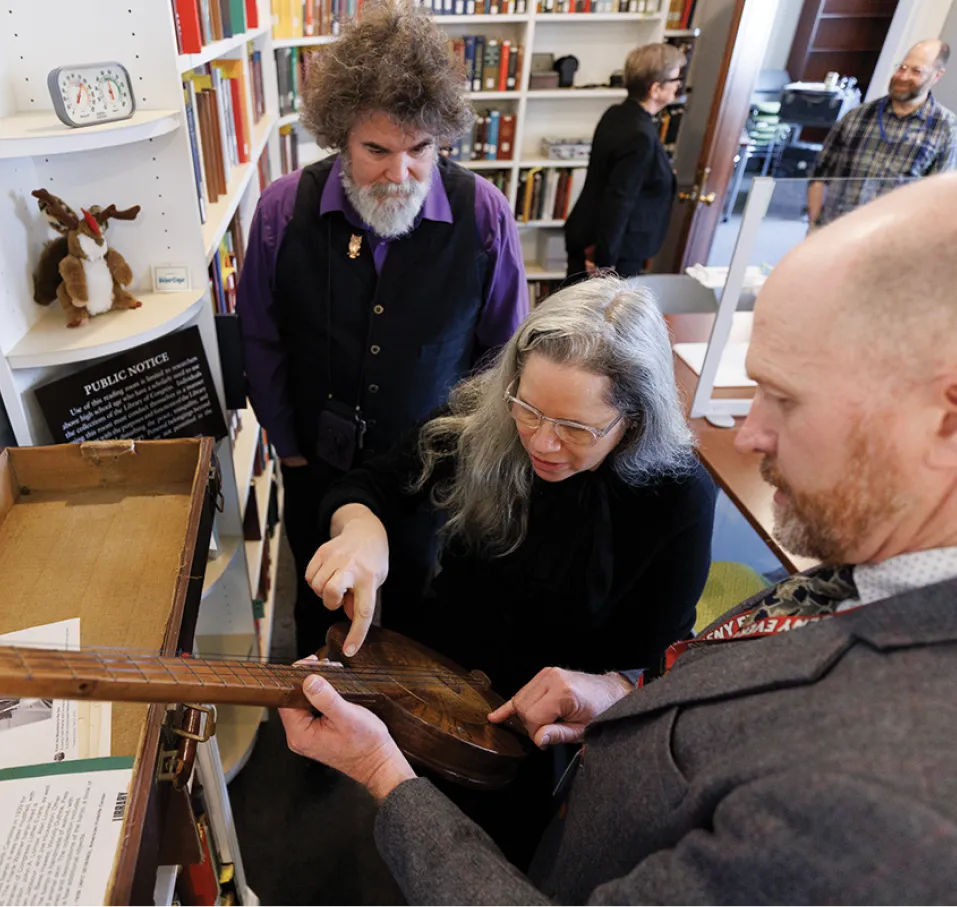
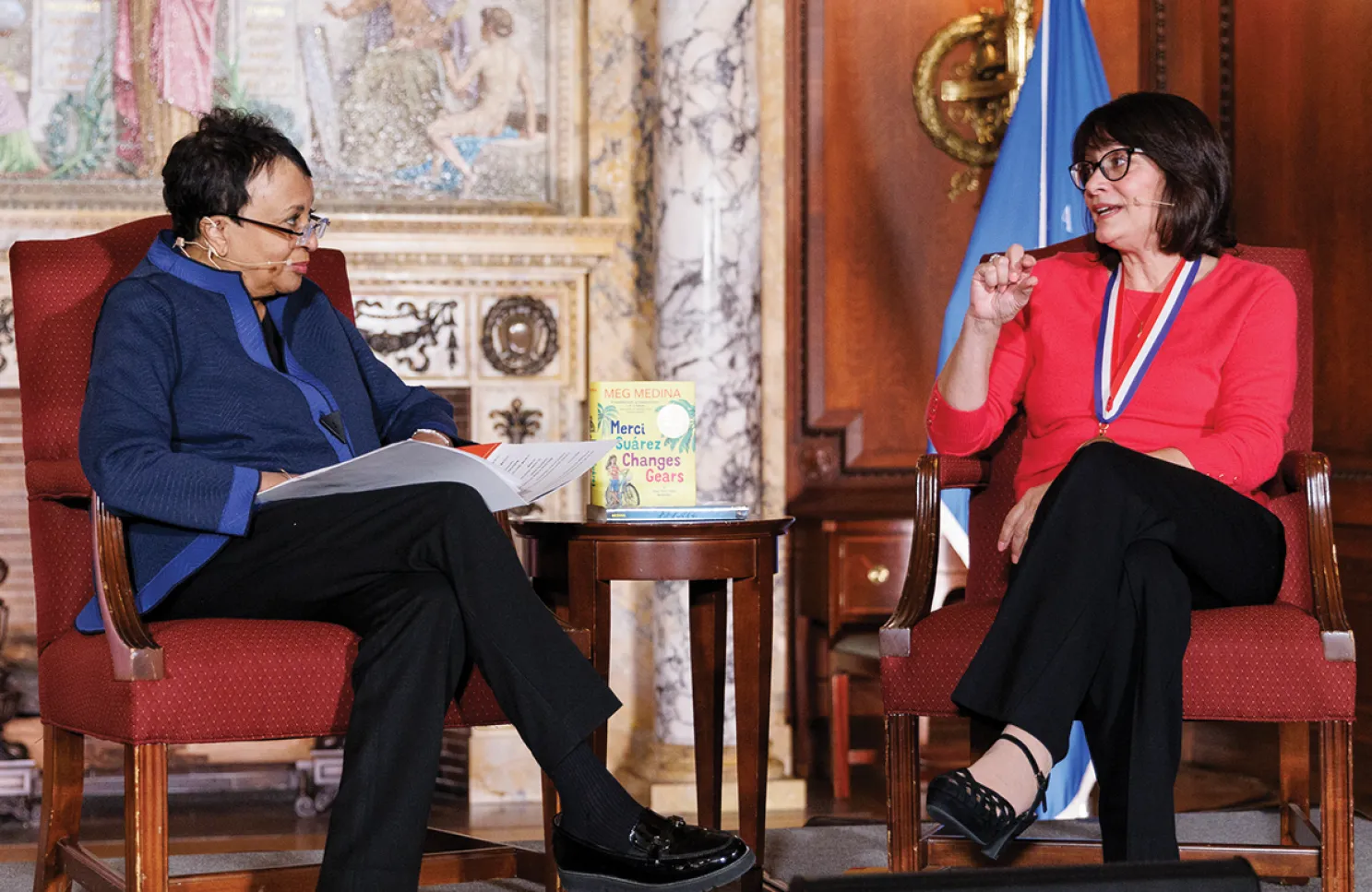
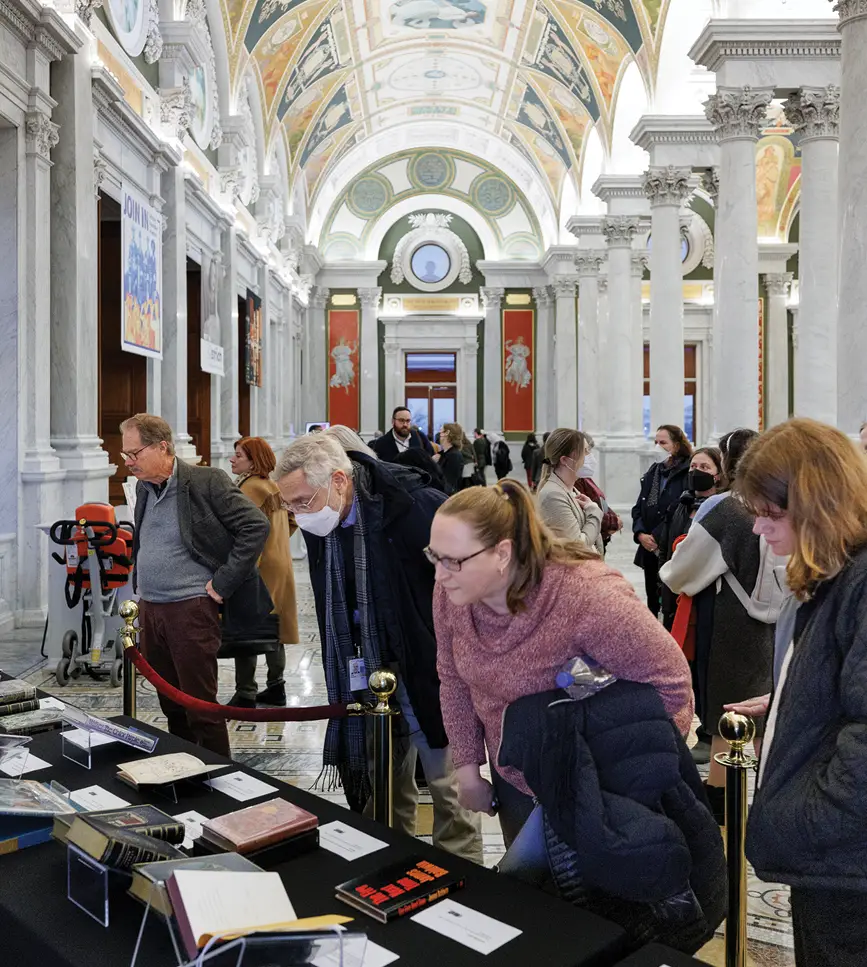

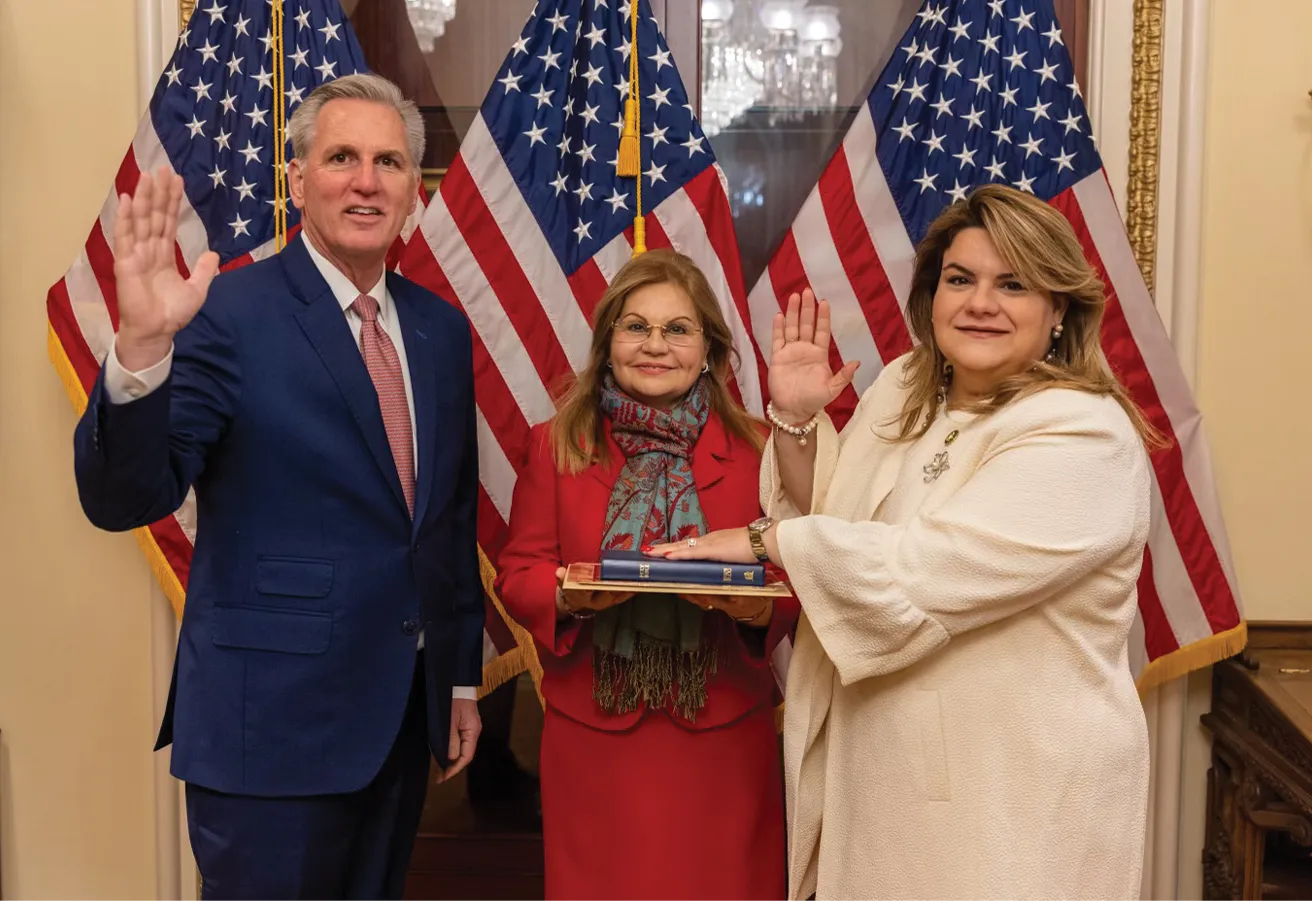
The Gershwin Prize
Medina, a Cuban-American, is the first Latina to serve as national ambassador in the program’s history. She succeeds Jason Reynolds, who served as ambassador from 2020 through 2022.

Product #21107191
Price: $19.95
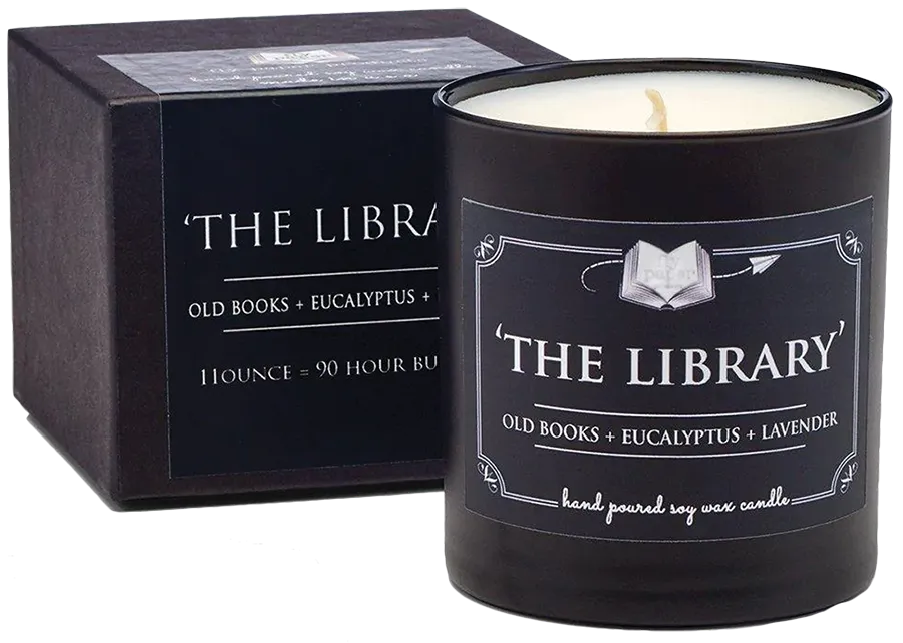
Product #21508223
Price: $38
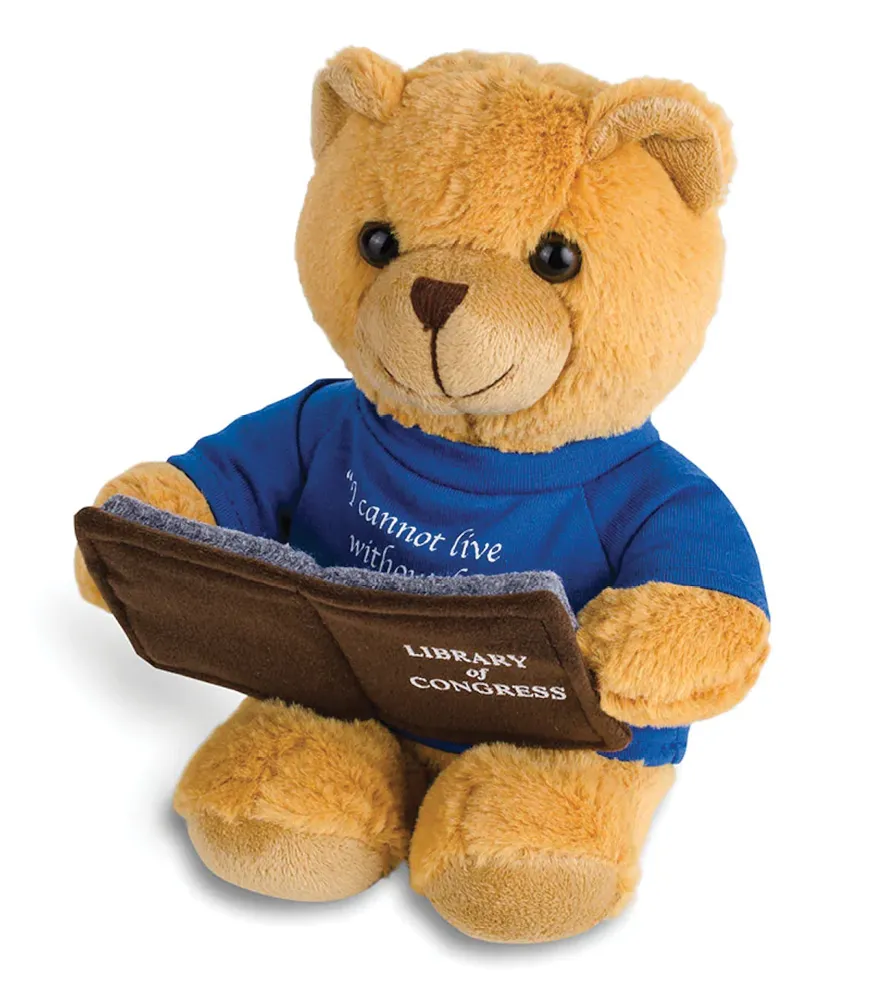
Product #21505250
Price: $14.95
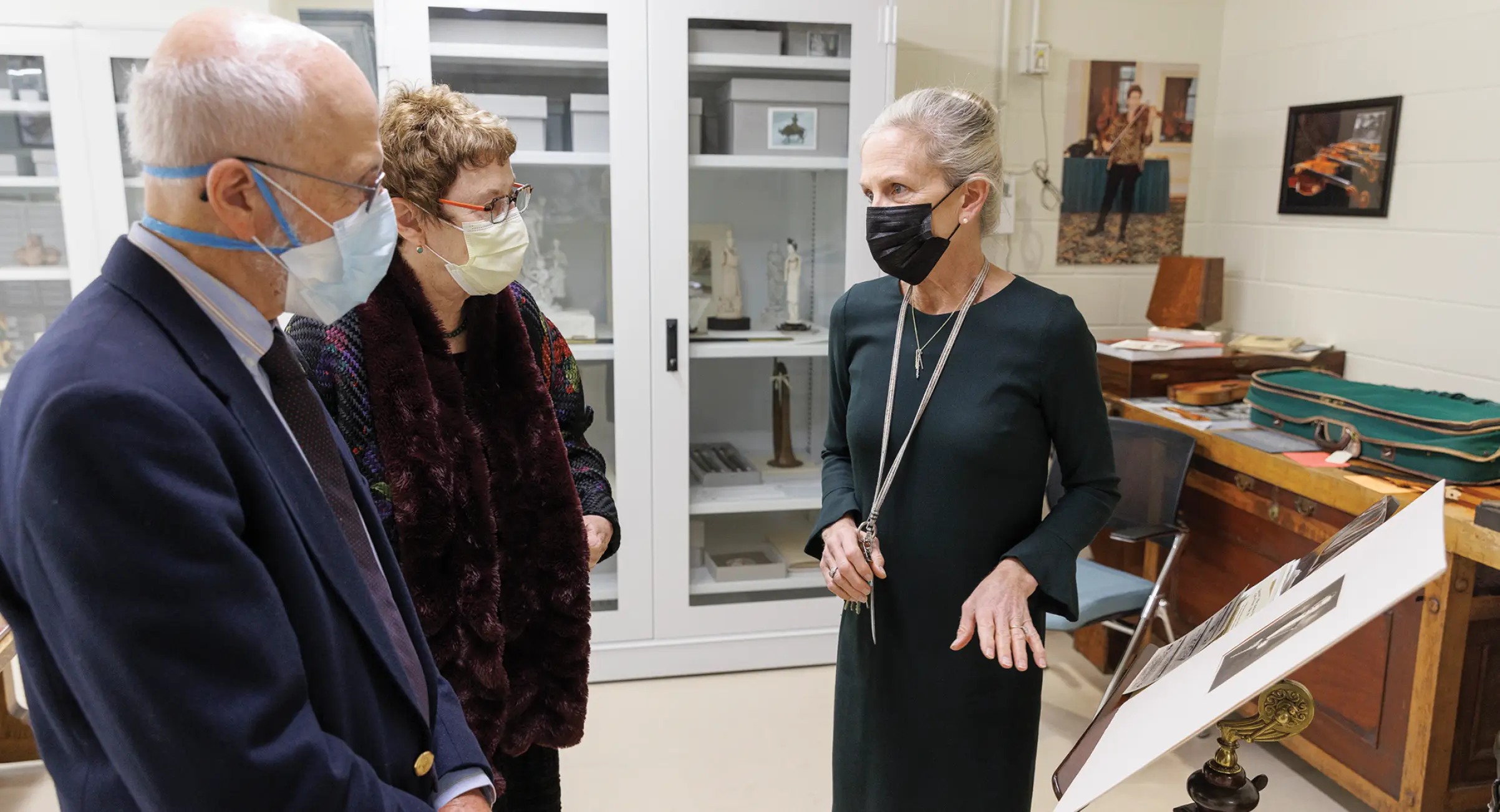
Sounds of Music
Elizabeth Sprague Coolidge generously funded the Coolidge Auditorium and endowed the concert program. Gertrude Clarke Whittall presented the Library with five Strads and the funds to care for them. Dayton C. Miller donated the world’s largest flute collection, each instrument with its own story.
Year after year, we are astounded by the generous support of the Library’s friends.
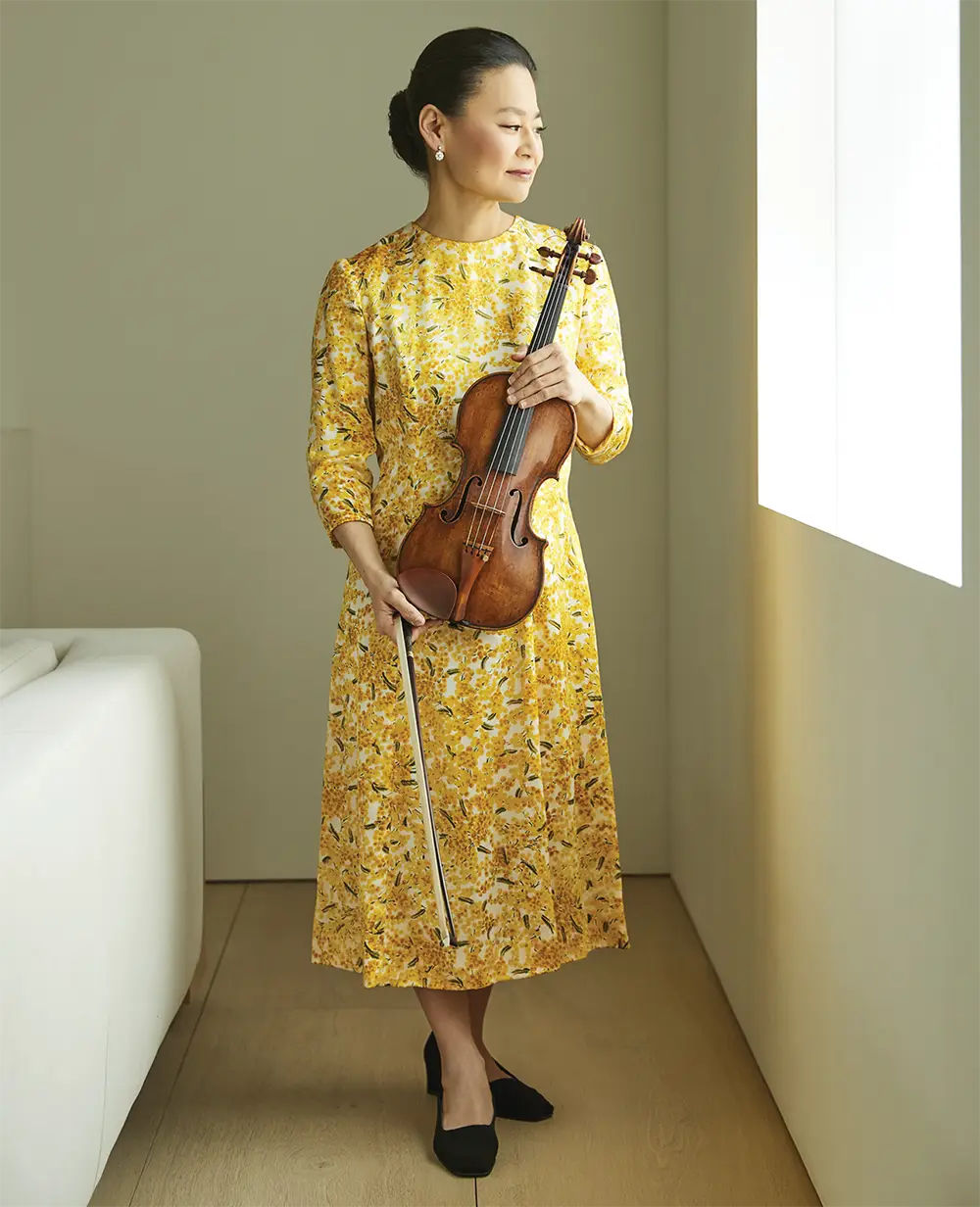
MIDORI
I consider my violin to be my partner in music-making. It is almost 300 years old, with so much history animating it. Any number of renowned violinists have played this august instrument over time, so that it is a repository of our legacy of iconic music — a keeper of many secrets, as it were — now abetting me in my own forays as an interpreter of so many amazing works that have enriched and continue to enrich humankind through the centuries.
For me, this instrument is all but alive. When I hold my violin in my hands, I know it so well. I feel that the violin has a personality, it has force of character, and its particularity has become a part of what I do.
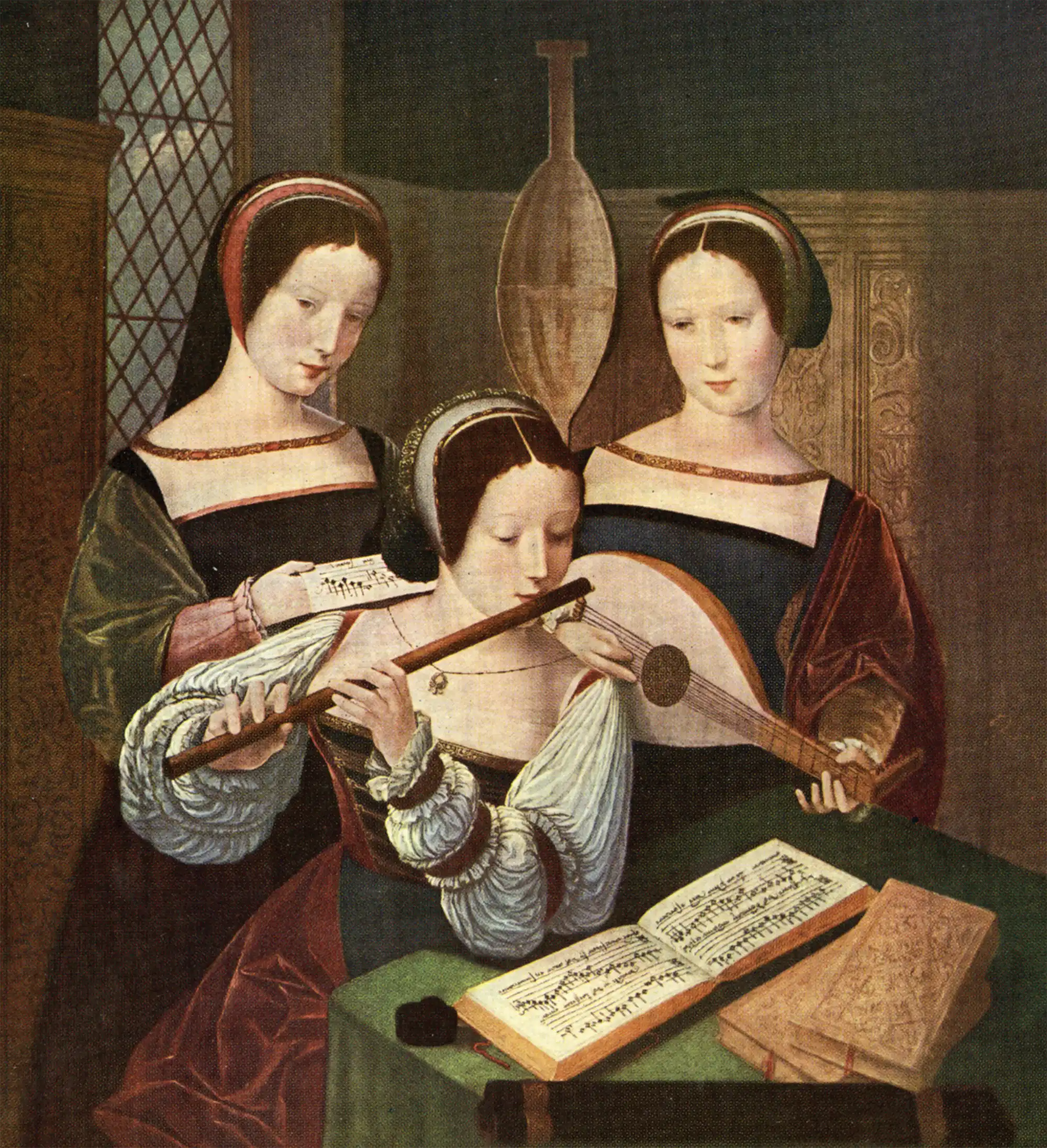
Current Exhibitions
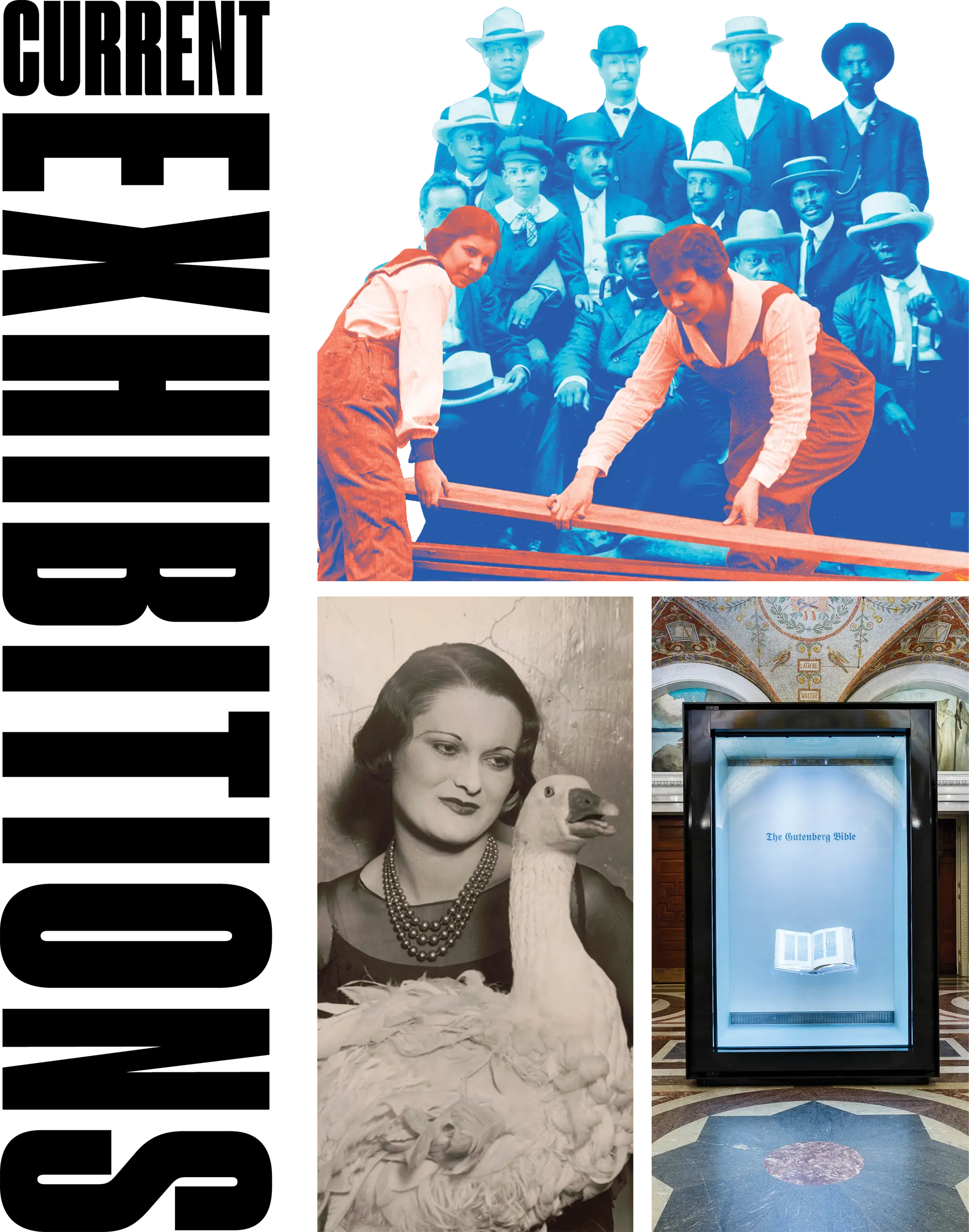
NOT AN OSTRICH: & OTHER IMAGES FROM AMERICA’S LIBRARY
THE GUTENBERG BIBLE
More Information
‘Join In: Voluntary Associations in America’
loc.gov/exhibits/

